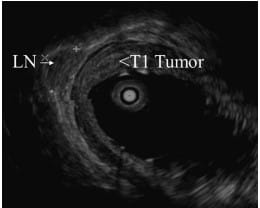
Enhancing Esophageal and Gastric Cancer Care with Endoscopic Ultrasound
Discover the pivotal role Endoscopic Ultrasound (EUS) plays in diagnosing, staging, and managing esophageal and gastric cancers, and how it aids in choosing the right therapeutic approach for patients.
The Role of Endoscopic Ultrasound in Esophageal and Gastric Cancer
Endoscopic Ultrasound (EUS) is a cornerstone in the evaluation and management of esophageal and gastric cancers. It offers a non-invasive, detailed look at the affected areas and nearby structures, significantly influencing treatment decisions.
Advanced Techniques for Accurate Staging
EUS utilizes either radial or linear echoendoscopes, each offering unique benefits in cancer staging:
- Radial Echoendoscopes: Provide a 360-degree view, ideal for a comprehensive assessment of the esophagus and stomach.
- Linear Echoendoscopes: Facilitate EUS-guided fine-needle aspiration (FNA), crucial for sampling local and regional lymph nodes.
Early-Stage Cancer and Nodal Involvement
For early-stage esophageal and gastric cancers, EUS’s role primarily revolves around ruling out nodal involvement, a key factor in determining the disease’s progression.

Fine-Needle Aspiration in Treatment Planning
EUS-guided FNA is instrumental in staging T1 or T2 esophageal and gastric cancers. Accurate determination of nodal involvement is critical in deciding between neoadjuvant chemoradiotherapy and direct surgical approaches.

Metastatic Disease Assessment
Confirming metastatic disease via EUS-guided FNA helps in categorizing treatment as curative or palliative, impacting overall patient management.
Assessing Locally Advanced Disease
In cases where a gastroscope cannot pass a malignant esophageal mass, EUS helps in identifying locally advanced disease (stage T3 or greater), aiding in appropriate treatment planning.
Detection of Low Volume Ascites in Gastric Cancer
EUS can detect low volume ascites, often missed by computed tomography, in gastric cancer patients. This finding is crucial for identifying possible peritoneal involvement.
Gastric MALT Lymphoma: Staging and Predicting Treatment Response
EUS accurately stages gastric MALT lymphoma and importantly predicts the clinical response to treatment, guiding therapeutic decisions.
Histologic Diagnosis in Challenging Scenarios
EUS-guided fine-needle biopsy is pivotal for definitive histologic diagnosis in conditions like linitis plastica and for patients with thickened gastric folds, where standard endoscopic biopsies may not be sufficient.
Conclusion
Endoscopic Ultrasound has dramatically advanced the care for patients with esophageal and gastric cancers. Its ability to accurately stage the disease, assess nodal involvement, and aid in the detection of metastatic or locally advanced disease shapes the therapeutic approach, leading to better patient outcomes.
Disclaimer: This content is for informational purposes only and should not be considered as medical advice. Always consult a healthcare professional for personal medical advice.
Learn More About Our Gastroenterology Services
Contact Us for More Information
